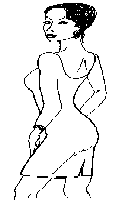Okay, Don't Quit

Chapter 7
Forgetting To Smoke
As you monitor your daily cigarettes, you may notice that you'll skip one of your regular ones occasionally. Most often it's a case of something unexpected coming up, and you forget to have that cigarette.
Forgetting is often thought of in terms of anniversaries, picking up the dry cleaning, or taking the garbage out, but it can be a useful avoidance tool. In the course of handling the complexity of daily living, the human mind uses forgetting as a way to keep focused effortlessly. No debate, no compromise, you don't even consider distracting situations. You just forget.
It's simple; it's clean — just forget to smoke.
Shift in Strategy
The section on forgetting marks a shift from closely monitoring your cigarettes to ignoring them. It's time to move on to other aspects of your life. Smoking had been a main theme. Now other things seem to be distracting you.
You should be at least two weeks into the program before you're ready for the forgetting phase. It takes about that long for the confusion and isolation measures to take a toll. The old smoking habit should be entering a phase where it doesn't have the strength it use to have.
It's time to shift your life away from smoking, naturally, gently; it's time to move from increased awareness to absentmindedness. Instead of watching your habit closely, you're going to get sloppy and start overlooking it.
The Power of Distraction
In addition to forgetting, the use of distraction is yet another tool for your avoidance work. Distractions, by their nature, are difficult to resist. Someone might say: "Don't look at that person with the purple ear." Not only will you be pulled into looking, but the idea of a purple ear will wipe out your current thought. If a purple ear isn't enough of a distraction, a mini-skirt or a tight pair of jeans might do the trick.
 You can become very good at distracting yourself.
You can become very good at distracting yourself.
Distractions are an effortless way to avoid cigarettes. As you walk across the floor to get a cigarette, let a recent magazine catch your attention. Step over to smell the evening breeze or straighten up the message board.
Set the scene for distractions. Place your cigarettes in the next room and seed the path with catchy items. A wood puzzle, a shopping catalog, or your guitar are possibilities. Set traps and let yourself get caught.
Some people are more attracted by visual distractions, others by sounds, and yet others by sensations. (For an in-depth analysis of these representation systems, the books by Richard Blandler and John Grinder are the prime source.) Find out what catches your attention and customize your distractions.
To identify your most effective distraction strategy, skim through the following list of distraction examples and notice which ones catch your attention. If one group predominates, it's likely that type of situation offer your best distractions.
Visual Distractions
- View of the garden.
- Jigsaw puzzles.
- Watching the yo-yo's flash.
- Framing the scene as a picture.
- The flow in the new fashion design.
Auditory Distractions
- The tune's beat.
- The whisper of the wind in the trees.
- The clarinet's tone.
- The vibrant voice of the talk show host.
- The tune's lyrics.
- The thump of the keyboard's keys.
Feeling Distractions
- The grip of your shoes on the sidewalk.
- The breeze in your face.
- The flow of the dance steps.
- The fabric's texture.
- The feel of the flute's keys.
Pick Easy Targets
Easy targets for distraction are "habit" type cigarettes low on your priority list. You don't have to distract yourself each time that cigarette comes up — one out of four would be a reasonable start. Then push for two out of four. Chip away. Always try for a bit more.